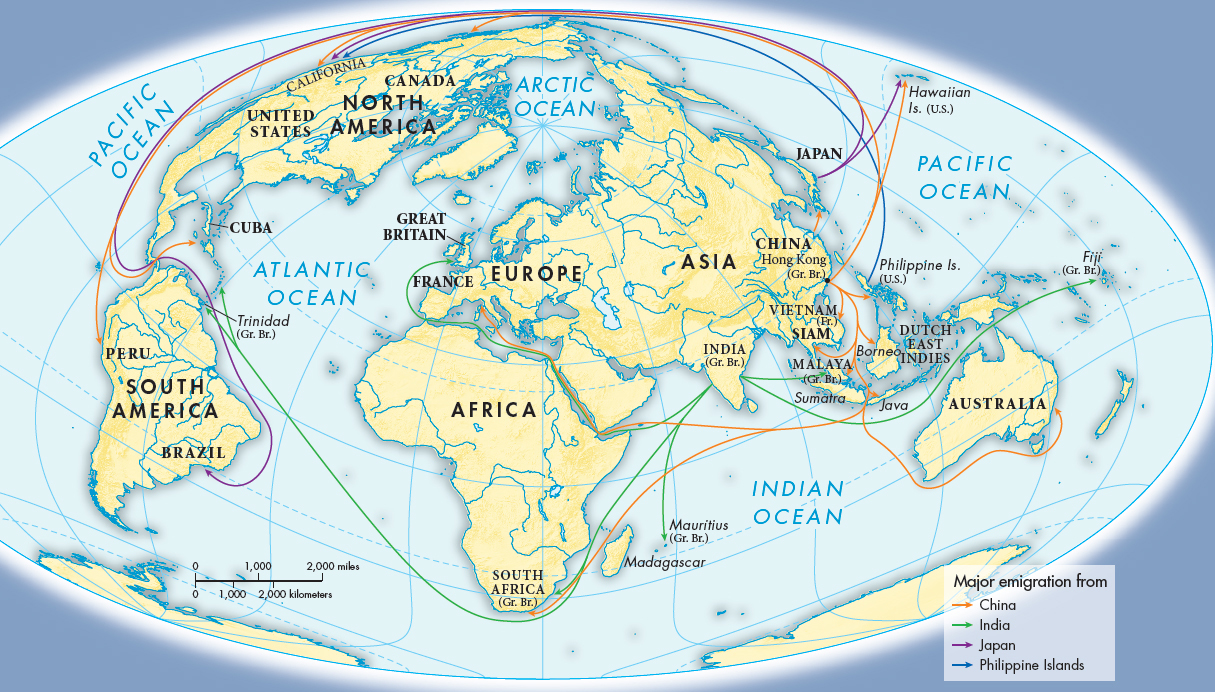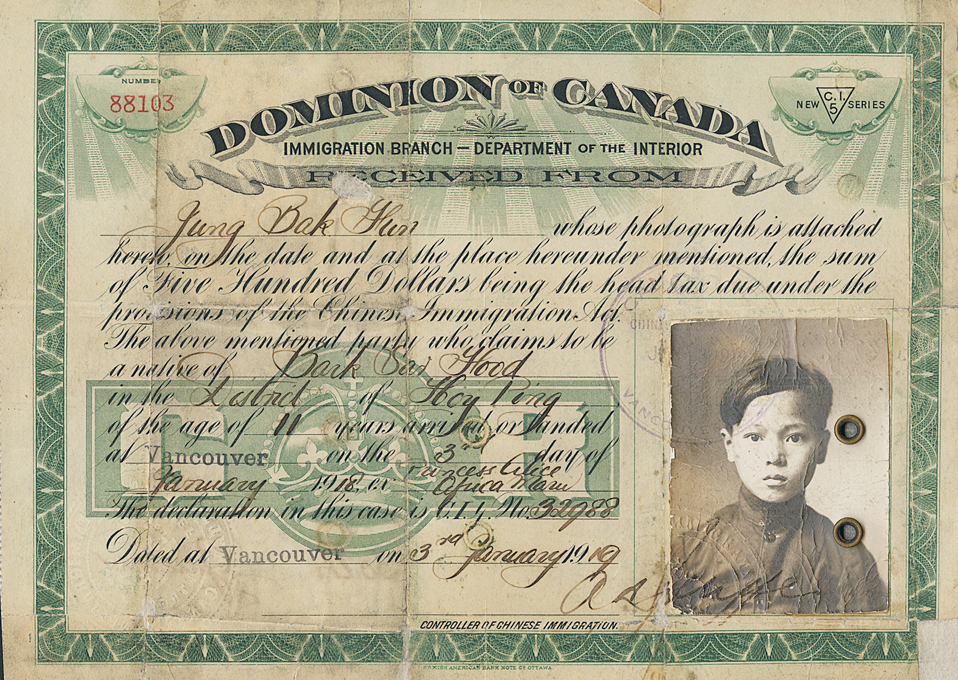A History of World Societies:
Printed Page 808
A History of World Societies Value
Edition: Printed Page 817
Asian Emigration
Like Europeans, Asians left their native countries in unprecedented numbers in the nineteenth century (Map 26.3). As in Europe, both push and pull factors prompted people to leave home. Between 1750 and 1900 world population grew rapidly, in many places tripling. China and India were extremely densely populated countries — China with more than 400 million people in the mid-

For centuries Chinese from the southern coastal provinces ventured out, and by the nineteenth century they formed key components of mercantile communities throughout Southeast Asia, from Siam south to Java and east to the Philippines. Chinese often assimilated in Siam and Vietnam, but they rarely did so in Muslim areas such as Java, Catholic areas such as the Philippines, and primitive tribal areas such as northern Borneo. In these places distinct Chinese communities emerged, usually dominated by speakers of a single Chinese dialect.
With the growth in trade that accompanied the European imperial expansion, Chinese began to settle in the islands of Southeast Asia in larger numbers. After Singapore was founded by the British in 1819, Chinese rapidly poured in, soon becoming the dominant ethnic group. In British-
Discovery of gold in California in 1848, Australia in 1851, and Canada in 1858 encouraged Chinese to book passage to those places. In California few arrived soon enough to strike gold, but they quickly found other work. Thousands laid railroad tracks, and others took up mining in Wyoming and Idaho. In 1880 more than a hundred thousand Chinese men and three thousand Chinese women were living in the western United States.
Indian entrepreneurs were similarly attracted by the burgeoning commerce of the growing British Empire. The bulk of Indian emigrants were indentured laborers, recruited under contract. The rise of indentured labor from Asia was a direct result of the outlawing of the African slave trade in the early nineteenth century by Britain and the United States. Sugar plantations in the Caribbean and elsewhere needed new sources of workers, and planters in the British colonies discovered that they could recruit Indian laborers to replace blacks. By 1870 more than half a million Indians had migrated to Mauritius (in the southern Indian Ocean, east of Madagascar) and to the British Caribbean, especially Trinidad. After the French abolished slavery in 1848, they recruited workers from India as well, with nearly eighty thousand Indians making the trip to the French Caribbean over the next half century. Later in the century many Indians emigrated to British colonies in Africa, the largest numbers to South Africa. Indentured Indian laborers built the railroad in East Africa. Malaya, Singapore, and Fiji also received many emigrants from India.
Indentured laborers secured as substitutes for slaves were often treated little better than slaves both on the ships that delivered them and on the plantations and in the mines where they worked. After abuses of this sort were exposed, the Indian colonial government established regulations stipulating a maximum indenture period of five years, after which the migrant would be entitled to passage home. Even though government “protectors” were appointed at the ports of embarkation, exploitation of indentured workers continued largely unchecked. Still, many of the migrants voluntarily stayed on after their indenture (others remained because they could not afford passage home).
In areas outside the British Empire, China offered the largest supply of ready labor. Starting in the 1840s contractors arrived at Chinese ports to recruit labor for plantations and mines in Cuba, Peru, Hawaii, Sumatra, South Africa, and elsewhere. In the 1840s, for example, the Spanish government actively recruited Chinese laborers for the plantations of Cuba. These workers were placed under eight-
Chinese laborers did not have the British government to protect them and seem to have suffered even more than Indian workers. Some of the worst abuses were in Peru, where nearly a hundred thousand Chinese had arrived by 1875, lured by promoters who promised them easy riches. Instead they were set to laying railroad tracks or working on cotton plantations or in dangerous guano pits. Those who tried to flee were forced to work in chains.
India and China sent more people abroad than any other Asian countries during this period, but they were not alone. As Japan started to industrialize, its cities could not absorb all those forced off the farms, and people began emigrating in significant numbers, many to Hawaii and later to South America. Emigration from the Philippines also was substantial, especially after it became a U.S. territory in 1898.

Asian migration to the United States, Canada, and Australia — the primary destinations of European emigrants — would undoubtedly have been greater if it had not been so vigorously resisted by the white settlers in those regions. On the West Coast of the United States, friction between Chinese and white settlers was fed by racist rhetoric that depicted Chinese as opium-
Most of the Asian migrants discussed so far were illiterate peasants or business people, not members of traditional educated elites. By the beginning of the twentieth century, however, another group of Asians was going abroad in significant numbers: students. Indians and others in the British colonies usually went to Britain, Vietnamese and others in the French colonies to France, and so on. Chinese eager to master modern learning most commonly went to Japan, but others went to Europe and the United States, as did Japanese students. Most of these students traveled abroad to learn about Western science, law, and government in the hope of strengthening their own countries. On their return they contributed enormously to the intellectual life of their societies, increasing understanding of the modern Western world and also becoming the most vocal advocates of overthrowing the old order and driving out the colonial masters.
Among the most notable of these foreign-
Passive resistance is a method of securing rights by personal suffering; it is the reverse of resistance by arms. When I refuse to do a thing that is repugnant to my conscience, I use soul-